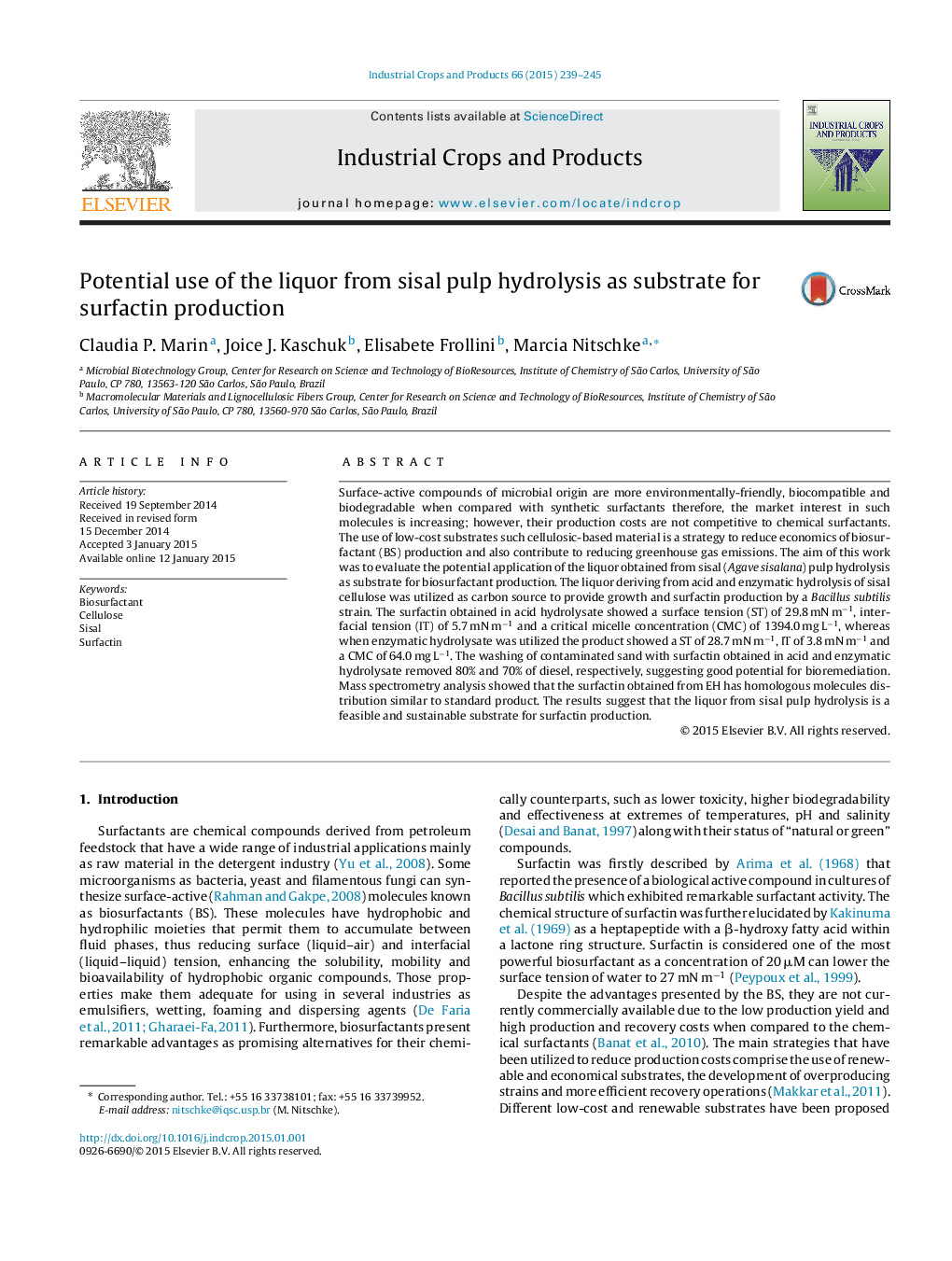| کد مقاله | کد نشریه | سال انتشار | مقاله انگلیسی | نسخه تمام متن |
|---|---|---|---|---|
| 4513219 | 1624843 | 2015 | 7 صفحه PDF | دانلود رایگان |

• Sisal cellulose was utilized to produce surfactin.
• Enzymatic hydrolysate was better substrate than acid hydrolysate.
• Surfactin obtained showed good surface-active properties.
• Liquor from sisal pulp hydrolysis is a promising substrate for surfactin production.
Surface-active compounds of microbial origin are more environmentally-friendly, biocompatible and biodegradable when compared with synthetic surfactants therefore, the market interest in such molecules is increasing; however, their production costs are not competitive to chemical surfactants. The use of low-cost substrates such cellulosic-based material is a strategy to reduce economics of biosurfactant (BS) production and also contribute to reducing greenhouse gas emissions. The aim of this work was to evaluate the potential application of the liquor obtained from sisal (Agave sisalana) pulp hydrolysis as substrate for biosurfactant production. The liquor deriving from acid and enzymatic hydrolysis of sisal cellulose was utilized as carbon source to provide growth and surfactin production by a Bacillus subtilis strain. The surfactin obtained in acid hydrolysate showed a surface tension (ST) of 29.8 mN m−1, interfacial tension (IT) of 5.7 mN m−1 and a critical micelle concentration (CMC) of 1394.0 mg L−1, whereas when enzymatic hydrolysate was utilized the product showed a ST of 28.7 mN m−1, IT of 3.8 mN m−1 and a CMC of 64.0 mg L−1. The washing of contaminated sand with surfactin obtained in acid and enzymatic hydrolysate removed 80% and 70% of diesel, respectively, suggesting good potential for bioremediation. Mass spectrometry analysis showed that the surfactin obtained from EH has homologous molecules distribution similar to standard product. The results suggest that the liquor from sisal pulp hydrolysis is a feasible and sustainable substrate for surfactin production.
Figure optionsDownload as PowerPoint slide
Journal: Industrial Crops and Products - Volume 66, April 2015, Pages 239–245